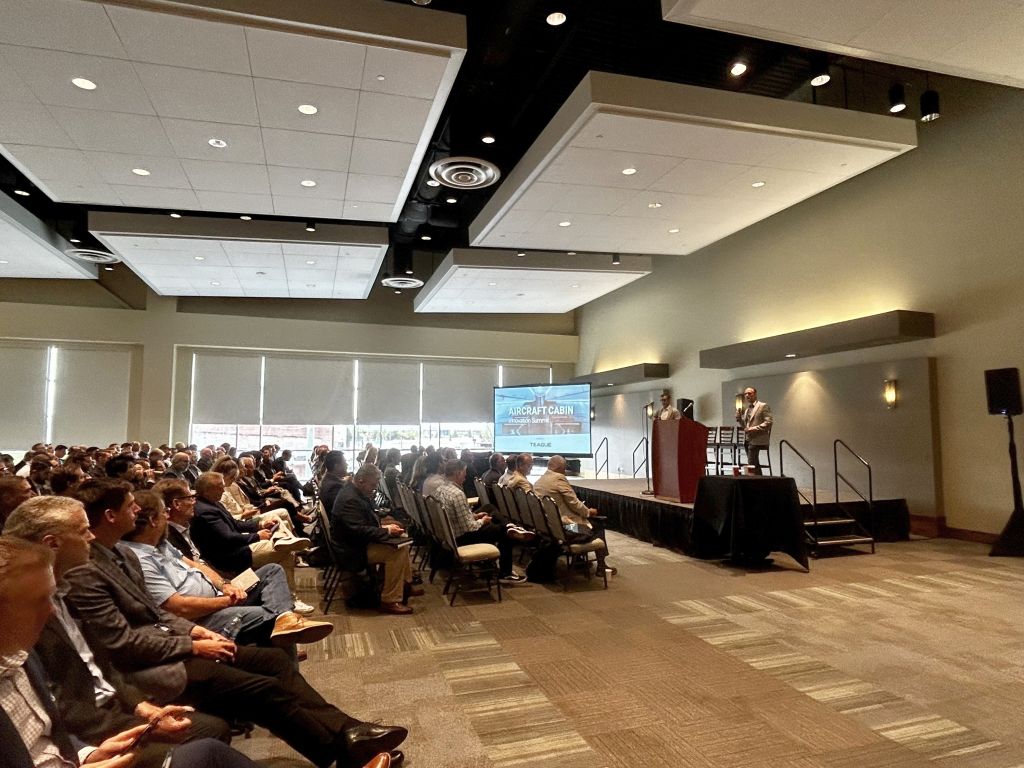The future of aircraft interiors

Monica Wick, CEO and Founder of RedCabin provides an overview of the company’s 2023 Aircraft Cabin Interiors Summit and looks at trending topics such as sustainability and accessibility.
In September, aviation professionals from around the world came together in Seattle to discuss the latest innovations in cabin interiors.
Hosted by Teague, RedCabin’s Aircraft Cabin Interiors Summit showcased the latest developments in the industry, and connected the most forward-thinking engineers, designers and manufacturers. The agenda was packed with expert speakers, and included insightful panel discussions and takeaways that demonstrated why the aircraft interiors market is set to reach US$ 20.2billion in 2028.
Over three days, the future of the passenger experience took centre stage. Trending topics included sustainability and accessibility and opened up important forums for delegates to discuss what they felt should be prioritised. These issues are ongoing challenges for the industry that the RedCabin summit helps address by bringing key stakeholders and decision-makers in aircraft interiors together in an environment where they can collaborate and innovate.
Manufacturing
Airlines are increasingly focusing on cabin design, and this year’s RedCabin summit benefited from the addition of a working group from Air New Zealand, which asked delegates to provide direct and open feedback on how the industry can continue to evolve.
It was apparent that there is a very real desire to make aircraft cabins feel more homely, more comfortable and more responsive to customer wants and needs, alongside a desire to improve the passenger experience by way of ‘low-risk’ adaptations. Summit delegates were also invited to take part in a working group where they discussed where manufacturing priorities should lie.
There were several ideas around low-risk changes that would make a big impact on travellers, with the upgrading of lavatories, bins/PSUs and galleys raised as areas where more flexibility is required. Suggestions for technological advancements included better connectivity and flight attendant panel software, with onboard lounges and bars also raised as a future possible addition to cabins.
Accessibility
Improvements continue to be made to accessibility within the cabin in the interests of people with reduced mobility, or those with visual or auditory impairments. The specific needs and requirements of less able passengers will continue to be a key part of the innovation process.
Accessibility in aviation should happen by design rather than by regulation, according to Michael Swiatek, chief strategy officer at The Abra Group, who provided insight during a RedCabin Summit panel event with Tyler Anderson-Lennert of Delta Flight Products, Christopher Wood MBE of Flying Disabled and Jo Rowan of PriestmanGoode. Michael highlighted how the industry needs to work collaboratively as a community to bring about change.

For example, it is often assumed that all visually impaired passengers have the same requirement, even though there are numerous vision-related problems. For others that find flying more challenging, issues can arise with booking travel, navigating a busy airport or checking in luggage. Airlines need to consider the needs and requirements of all passengers, using both emerging technologies and best design practice to ensure the flying experience is as inclusive as possible, particularly as one in four people in the United States have some form of disability.
To address such challenges and improve the experience of all passengers, the airline industry will continue to reassess how passengers interact with the cabin. This is the only way the industry will be able to make the changes that, overall, make a substantial difference to the passenger experience.
Sustainability
The industry has now fully embraced the importance of creating a more sustainable future. This topic appeared in numerous discussions, with leaders from the entire industry asking questions about what the next steps are for the industry, and how best to approach them.
Weight reduction of products is often the first solution for manufacturers. While this does inevitably increase sustainability – reducing fuel consumption for example – this does not consider the manufacturing process itself, nor the materials used.
The industry is on the cusp of a new generation of aviation innovation with sustainability a key consideration, alongside passenger comfort and control. The previous Aircraft Cabin Interiors Summit recorded sustainability in the cabin as a critically important issue within the industry, reflected in research conducted at the event. 65% of respondents predicted significant improvements in cabin sustainability over the next 2-5 years. Furthermore, 40% anticipated an increased use of lightweight materials.
The survey also highlighted that 30% of participants emphasised the importance of establishing sustainable partnerships to develop ‘green’ alliances and openly collaborate on innovative best practices.
Ultimately, discussions in innovation will always come back to the passenger experience. It comes down to a question of compromise and whether passengers would either increase their spend, or reduce their expectation in terms of cabin features, in the name of enhanced sustainability. This question, for now, remains an important one for the industry to address.













